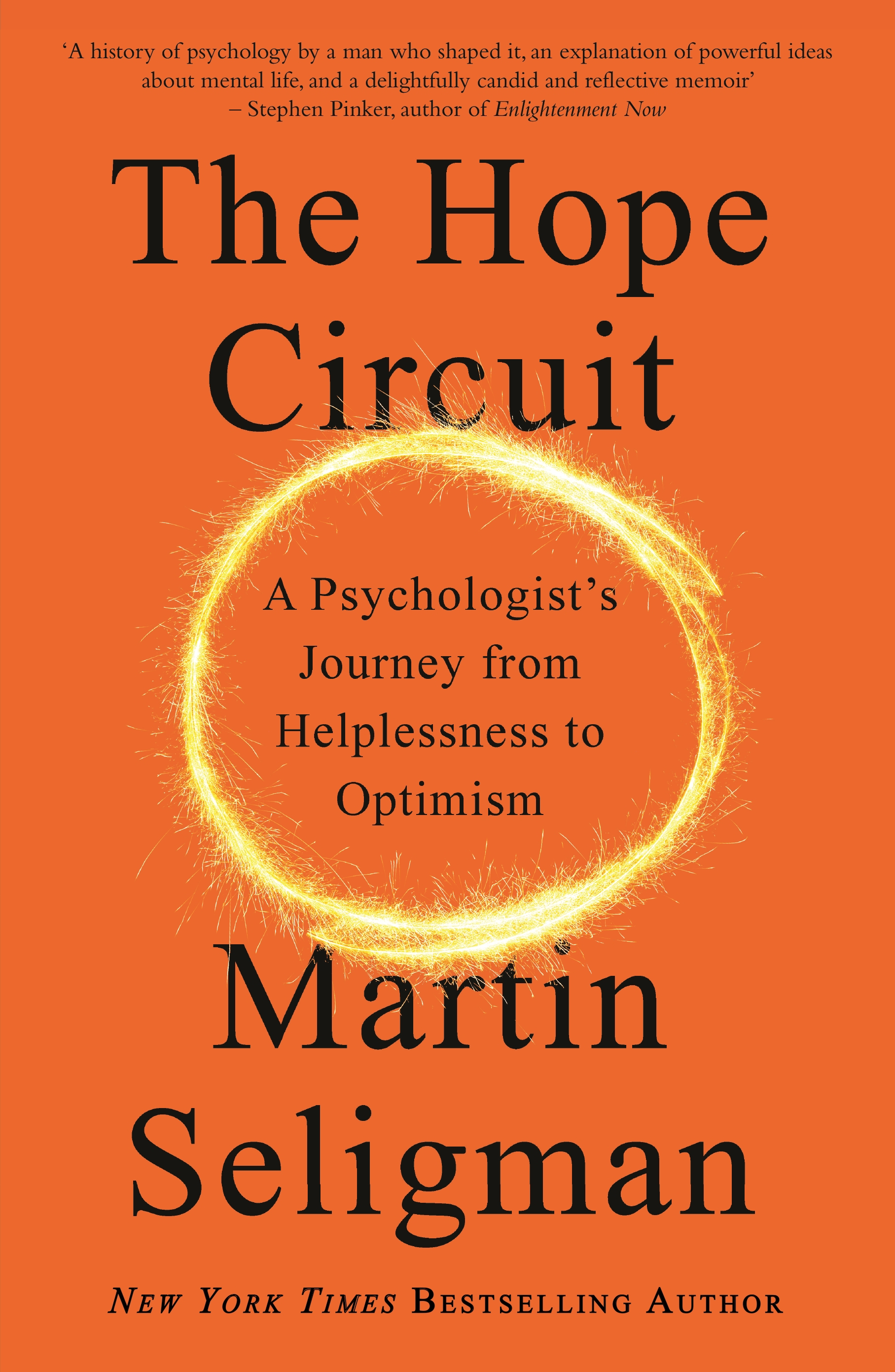Positive Psychology is a relatively new domain in the field of psychology. While Psychology in the 20th century looked at the relief of suffering, positive psychology shifted its focus on improving wellbeing. Rather than trying to fix what is broken, it aims to foster human flourishing. On that note it aligns itself well with the current salutogenetic (health promoting) shift in medicine. This shift focusses on encouraging psychological traits and behaviours that have been shown to support resilience in the view of adverse life events, and as a consequence promote physical and psychological health (1,6,9).
Seligman et al (2016) put forward the idea of the human species as a “Homo Prospectus”. Positive psychology suggests that the prospection of our personal future will manipulate which elements we register from past and present circumstances. From the endless possibilities at any given time, the one that seems to enlist the most prominent simulation is the one which has the highest subjective salience (meaning attention-grabbing). To enlist support for a prospective future scenario our brain circuits will draw on any available past and present sensory information that is supportive to what we expect to happen next, often to the disadvantage of contrary or otherwise distracting data. The scope of our prospecting about possible future scenarios depends on how free we are in our thinking (level of perceived control); how informed and creative we can be as well as our personalities. The question is – does neurobiology support those claims?
Seligman’s idea links in well with the theory of intrinsic brain networks: the default mode network (DMN), salience network (SN), sensorimotor network and the central executive network in the brain. The Default mode network (DMN) is active in a state of wakeful rest, as such when we are not engaged in a task that requires external attention but focussed on our own cognitions, e.g. day-dreaming (prospecting about something in the future). This network functions anticorrelated to the Salience network (SN), which is responsible for the detection of any salient internal and external stimuli that stand out from concurrent sensory or emotional data. The SN serves an important role in allocating our limited perceptual and cognitive resources to the seemingly most relevant individual task at hand. It acts likes a switch from the DMN (internal cognition) to the Central executive network in the fronto-parietal regions (external cognition, such as analysing, problem solving, decision making). Under normal circumstances the DMN is not connected to the Sensorimotor network, or the attention networks meaning that harmless sensory information will under normal circumstances not be processed in a resting state. However, a recent Article by Hermington et al (2018) has shown that alterations within DMN and cross-network (DMN-SM) connectivity can be linked to lower or higher resilience scores as well as to increased or decreased pain perception. They have proposed that if sensorimotor afferents and attention networks are hyperconnected to our DMN it will significantly influence what we expect to happen next (future prospecting) and hence guide pain/health behaviour (e.g. as it has already been shown in patients with PTSD (3) and the elderly (2)).
While we still can’t pinpoint the neural correlates of ‘resilience’, being able to successfully ‘bounce back’ from adverse life events also seem to manifest itself in pain-related outcomes such as pain acceptance, catastrophizing (rumination) and flexibility to adjust. For example, an ‘adjustment disorder’ is defined by the medical encyclopedia as a “group of symptoms, such as stress, feeling sad or hopeless, and physical symptoms that can occur after you go through a stressful life event. The symptoms occur because you are having a hard time coping. Your reaction is stronger than expected for the type of event that occurred.”
 While Positive Psychology has yet to be researched more closely with regards to pain, it has been useful in the understanding of biological sources for depression and PTSD. Maier and Seligman (2016), demonstrated a distinct cortico-limbic neural circuit that, if switched on, seem to reduce symptoms of “learned helplessness” (which equals 8/9 signs of depression) in both animal and human studies. They termed this neural connection the “Hope circuit”, as they postulated that it is activated through hope for the future, experience of mastery, and anticipation of control and concluded that the activation of this circuit is necessary for preventing learned helplessness/depression. Maier, Seligman and their team showed that in ‘Helplessness experiments’ they were 2/3 of people who the researchers could not make helpless and they shifted their research into what makes people resilient? This connected well with Seligman and Petersen’s earlier work which had investigated quantifying optimism and pessimism as ‘attributional styles’ to causes of external events:
While Positive Psychology has yet to be researched more closely with regards to pain, it has been useful in the understanding of biological sources for depression and PTSD. Maier and Seligman (2016), demonstrated a distinct cortico-limbic neural circuit that, if switched on, seem to reduce symptoms of “learned helplessness” (which equals 8/9 signs of depression) in both animal and human studies. They termed this neural connection the “Hope circuit”, as they postulated that it is activated through hope for the future, experience of mastery, and anticipation of control and concluded that the activation of this circuit is necessary for preventing learned helplessness/depression. Maier, Seligman and their team showed that in ‘Helplessness experiments’ they were 2/3 of people who the researchers could not make helpless and they shifted their research into what makes people resilient? This connected well with Seligman and Petersen’s earlier work which had investigated quantifying optimism and pessimism as ‘attributional styles’ to causes of external events:
- Optimistic style responds to bad event with “its local, non permanent and controllable”
- Pessimistic style: “generalisation, (e.g. bad math test to I am a failure), it is going to last forever, and pervasive, (e.g. it will underlie everything I do – linked with a tendency to catastrophise)”
Important for us in the clinic to understand is that the internal activity of prospecting either positive or negative future events will significantly evoke biological consequences (e.g. cardiovascular, vagal tone, hormonal release), in a similar manner to as if we would be exposed to external events that make us feel either positive or negative emotions (7).
As many of our pain patients also suffer from depression and/or often feel helpless/hopeless in their perspective to deal with their pain in the future, it might be worthwhile to look for those attributional styles. However, before we do this, is there plausible scientific reason to believe that you can change a pessimist into an optimist or teach resilience? Research on positive psychology has shown promising results:
- Experiments in middle school by utilising techniques of cognitive therapy (e.g. positive self-talk, thought challenging) showed that depression in puberty halved in trained school kids (4)
- US Army – looking at occurrence of PTSD in soldiers to awful events. Improvement in Resilience training lower PTSD and substance abuse (5)
- Geelong grammar school (Victoria, Australia) adopted Positive Psychology trough the Institute of Positive Education ggs.vic.edu.au – results showed that students developed lesser depression (8)
So over to you: what has been your experience with fostering HOPE in your patients? Have you had any experiences that this has improved either pain perception or depressive symptoms? If so – how have you done it?
-Martina Egan-Moog
 Martina is a German physiotherapist with postgraduate qualifications from Curtin University Perth, and extensive clinical work experience in the area of acute and chronic pain management in Australia, Germany and Switzerland. She is currently working in a multidisciplinary outpatient pain management team Precision Ascend and at the Barbara Walker Centre for Pain Management, St.Vincent’s hospital Melbourne. She has been an enthusiastic educator with 17 years of teaching undergraduates and postgraduates in Australia, Switzerland, Austria, and Germany. Martina has been a NOI instructor since 2003 and is primarily responsible for the German translation of Explain Pain, Graded Motor Imagery and the Problem Pain Patient.
Martina is a German physiotherapist with postgraduate qualifications from Curtin University Perth, and extensive clinical work experience in the area of acute and chronic pain management in Australia, Germany and Switzerland. She is currently working in a multidisciplinary outpatient pain management team Precision Ascend and at the Barbara Walker Centre for Pain Management, St.Vincent’s hospital Melbourne. She has been an enthusiastic educator with 17 years of teaching undergraduates and postgraduates in Australia, Switzerland, Austria, and Germany. Martina has been a NOI instructor since 2003 and is primarily responsible for the German translation of Explain Pain, Graded Motor Imagery and the Problem Pain Patient.
References:
- Antonovsky A, Unraveling the Mystery of Health: How People Manage Stress and Stay Well, Jossey-Bass, San Francisco, Calif, USA, 1987.
- Bauer H et al (2016). Resilience moderates the association between chronic pain and depressive symptoms in the elderly. Eur J Pain; 20:1253–65.
- Bluhm RL et al (2009). Alterations in default network connectivity in posttraumatic stress disorders. J Psychiatry Neurosci;34:187
- Brunwasser SM et al (2009). A meta-analytic review of the Penn Resilience Program’s effect on depressive symptoms. Journal of Consulting and Clinical Psychology, 77: 1042-1054.
- Harms P (2013). The comprehensive soldier and family fitness evaluation: Report no 4. Evaluation of resilience training in mental and behavioural health outcomes. University of Nebraska, Lincoln. http://digitalcommons.unl.edu/pdharms/10/
- Hermington KS Rogachov, A et al (2018). Patients with chronic pain exhibit a complex relationship triad between pain, resilience, and within- and cross-network functional connectivity of the default mode network. Pain, 159 (8), 1621-30.\
- Nikrahan G et al (2016). Effects of positive psychology interventions on risk biomarkers in coronary patients: a randomized, wait-list controlled pilot trial. Psychosomatics, 57: 359-368.
- Norrish M (2015). Positive Education: The Geelong Grammar School Journey. Oxford University Press.
- Seligman M (2018). The Hope Circuit – a psychologist journey from helplessness to optimism.
- Maier S & Seligman M (2016). Learned helplessness revisited fifty years later: Insights from Neuroscience. Psychological Review 123, 349-367.
- Definition of ‘Adjustment Disorder’ – https://medlineplus.gov/ency/article/000932.htm
Tag: Biopsychosocial; DIMs and SIMs


As a practitioner one way i connect with my clients is by telling my own story about pain, depression and anxiety. I have been a practitioner for the last 16 years and when I came out of university I was working in a more Biomedical way, then 8 years ago i had an experience that has reshaped my clinical practice and how I can help my clients.
8 years ago I was working hard with the full catastrophe going on, work, kids mortgage, one income. I gradually started getting a pain in my right shoulder and over the next year I saw Myotherapist’s, Physio’s, Osteo’s and an acupuncturist. My pain was not changing and I was quickly falling into depression and anxiety.
One morning I woke up and if I died tomorrow I would not care and this was my turning point. I went doctor and started getting some help for my depression. I did an 8 week MBSR (Mindfulness Bases Stress Reduction) course and this was one of the hardest things I have done, but also one of the most rewarding. it is a practice I still do everyday and it has helped to shape my resilience to further challenges in my life.
As well as this I started mapping out all the dangers and the safeties in my world. This looked very similar to the DIMs and SIMs before it was released. I started doing things I loved again and changing the dangers in my world. Over a few months the pain in my shoulder went away. Could these things be linked?
You always need to change a negative into a positive and this allows me to connect better with my clients and introduced me to the Biopsychosocial framework. This experience is a big driver of my passion for helping others and building there own resilience. 3 years ago I developed a networking group of healthcare practitioners in my area and this has a few aims to make sure all the practitioners are doing well (supporting them through tough times), giving a referral network for our clients in persistent pain and to share knowledge and make sure we are all reading from a similar book and framework. This brings a sense of safety to our clients and to show we are all working together on there journey to better health. I have made a power point of my pain experience and express it through the Protectometer.
https://www.youtube.com/watch?v=qP1vCacQSWw&t=347s
Thank you for reading my story
Mat
Beautiful article Martina 👍Shifting despair back towards hope is indeed a difficult task…..but not impossible…..
DB London
I am an osteopath that has taken a PG Dip mindfulness to help with my BPS approach to pain. What I found in class was although self compassion and gratitude are taught most discussions in class centre around negative affect. I decided to look into positive psychology and found that their techniques are very easy to integrate into practice, although I admit I find myself bound by my own concepts of who I am and what is expected of me by patients.
I feel that the future of pain management will lie in groups, with mindfulness, positive psychology, exercise and interoceptive (body) awareness training.
Stacking therapies seems to work and I highly recommend the attached link to psychology researcher Michelle Craske giving a keynote speech this year, especially if you are busy to skip ti her “Positive Affect Training” section, about 40 mins in, showing stunning results in improving positive affect, though I felt throwing exercise into the mix would have bumped it up further.
https://www.youtube.com/watch?v=leMoA1wcAkA
This is a refreshing and beautiful article. Thank you for this. I have been working with people with chronic pain (myself included ) for about 15 years now. One way I have been recently working on fostering hope is with visualizations and the imagination. I guide my clients to imagine the version of themselves they would like to be. Amazingly – seeing this version and connecting with what it would feel like to be there- allows for them to make decisions about their health that better support their progress. They have something to work towards. Some might say it’s false hope but actually – all my clients I have introduced this to says it helps them feel motivated when they get to the tough moments.
Yes! Im currently studying a Masters of Pos Psych at Melbourne Uni and LOVE the combo with my 15 years as a physio in mainly a biomedical based sports field!
Fantastic to see it combined on NOI pages!
Great article, I learned something new! Thanks!